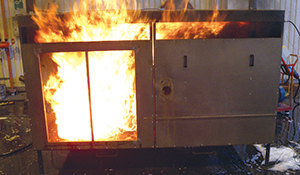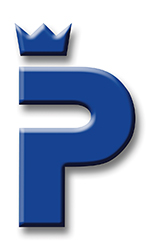
The U.S. expansion of SP Technical Research Institute of Sweden provides further evaluation and risk analysis in the prevention and suppression of vehicle fires
By David Hubbard
SP Fire Research, a division of SP Technical Research Institute of Sweden, is one of the largest fire research and testing facility in Europe. The 130-plus SP Fire researchers, engineers and industry experts provide evaluation and risk analysis in the prevention and suppression of vehicle fires; and have promoted bus fire safety globally as a top priority since 2004.
—————————————————————————————————————————————
YOU MIGHT ALSO LIKE:
- FMCSA announces enhancements to SMS website
- SP Fire Research expands in the US
- Work safe; minimize the damage
—————————————————————————————————————————————
The organization has been active in test methods specific to vehicle fire. Testing products and solutions against realistic fire scenarios and aspects specific to vehicular fire hazards, its aim is to establish standards by which to the objectively evaluate safety performance of fire suppression products and prevention methods.
SP Technical Research been involved in North America for over 20 years, conducting research in such fields as surface chemistry and agriculture. As of this year, SP Fire Research has expanded its mission to include work in the United States. Vehicle fire safety expert Joey Peoples heads up the expansion from offices in Raleigh, NC.

Peoples, a 27 year veteran in the special hazards fire protection field, previously served as manager of the Commercial Ground Vehicle group for Kidde Technologies.
He is continuing in the same vain with SP Fire Research to bring the group’s vast knowledge and research capabilities to bear on vehicle fires in North America. He says vehicle test fires and thermal event investigations, as well as simulations, fire event re-creations, live fire testing and small-scale testing are just some of the capabilities SP Fire Research will soon be providing.

The power of the “P” mark
As part of its work, SP Fire Research is leading the way for more effective fire suppression systems by establishing a certification process (SPCR183) and test method (SP test Method 4912) for testing fire suppression systems against known fire threats and environmental conditions specific to bus engine environments. The goal is a new international standard and certification for bus engine fire suppression.
SP Fire Research currently issues certificates to successful systems and permits them to show the trademark “P” mark of approval on the components — a voluntary certification quality mark for the industry to denote high quality, approved fire suppression systems on buses and coaches.
“Several fire tests conducted on operational buses have confirmed that the pass/fail criteria used in this certification demonstrate a high level of protection,” says Fredrik Rosen, marketing manager. “More than 20 various types of systems — dry chemical, water base, aerosols and gaseous — are pursuing the “P” mark. Several systems have already been approved or are in the final stages of approval.”
As adoption of the standard becomes more common around the globe, Peoples says U.S. transit operators are among the first to actively include the “P” mark in their procurement specifications.
Fire safety trends globally
SP Fire Research says its new activity in the U.S. is representative of the increased awareness globally of fire safety, noting that government agencies, industry associations, OEMs, bus and coach operators and fire safety advocacy groups have formed committees and knowledge platforms to discuss the issues.
Peoples says research, testing and adoption of requirements for automatic fire detection and suppression systems are underway in the U.S. at both the federal and state level.
“To one degree or another, all modes of bus transportation in the U.S. are using some form of automatic fire systems,” he says. “Some make it mandatory for all vehicles; others focus on vehicles where evacuation issues are a concern.”
Meanwhile, the United Nations Economic Commission for Europe (UN ECE) is considering a proposed change to Regulation 107 which could require the installation of fire suppression systems in the engine compartment of all single-deck, double-decker, rigid or articulated vehicle of category M2 or M3.

“Responsibility to ensure safe travel on buses should be shared by all parties worldwide,” Rosen says. “Establishing standards and best practices will ultimately lead legislation that is backed by sound scientific knowledge.”
Build in best practices
Bus fire safety encompasses many aspects of design, operation, maintenance, evacuation, and all play a role in establishing effective standards and best practices.
SP Fire Research says the first and perhaps the most important step in designing a fire safety plan is to conduct a thorough fire risk analysis that includes a Failure Mode Effects Analysis (FMEA). The FMEA identifies the highest risks of fire in terms of occurrence and severity, as well as the best methods for detection; and helps establishing the best maintenance and training practices to address each risk area.
For example, high temperatures in the engine compartment can cause premature failure of components and potentially increase surface temperatures which could ignite flammable fluids more readily than expected. Ventilation through fans and openings in the engine compartment can produce high levels of airflow that facilitates cooling of the engine and compartment, but also increases the intensity and spread of flames. Therefore, the use of temperature strips in high risk areas to identify unexpected high temperature zones is a good best practice.
“A bus fire of any magnitude is always an unfortunate event,” Rosen says. “Still, beyond just knowing what caused the fire, such incidents can also be viewed in as the most important learning tools that provide critical input to instill best practices for safer design, operation and human behavior.”
Peoples says the various vehicle types and modes of operation pose unique challenges in regard to fire safety.
“The risk for fire multiplies throughout the most vulnerable areas,” he says. “SP Fire Research will be publishing its Top Most-Wanted fire related issues. Some projects are already funded and under way; others are awaiting funding.”
According to SP Fire Research, areas of concern include:
Wheel well fires
The exposed environment and deep seated risk makes wheel well fires particularly difficult to detect and suppress. Testing has shown toxic fumes and smoke can seep into the passenger compartment in less than five minutes.
In addition to tire pressure/temperature monitoring systems, early testing of some wheel well coatings have been shown to provide a significant increase in the evacuation time.
Detection systems
SP Fire Research is currently working to develop an improved test method fire detection and fire alarm systems, and plans to propose a news standards for them in heavy vehicles. This project will further investigate non-traditional methods such as predictive failure modes for high risk components, which it says will facilitate the rapid identification of pending failures of hoses and lines carrying flammable fluids and components that have greatly exceeded their operational parameters.
Flammable materials
While the need for lighter, less costly materials is always present, Rosen and Peoples say further research is necessary to establish adequate performance requirements for the use of flammable material in high risk areas for all buses and coaches.
Electrical fires
Electrical arcing and shorts do not always trip protective devices such as fuses. Some cables such as from the battery to the starter and alternator carry very high currents capable of producing enough heat to not only ignite nearby combustible materials, but also cause breaches in hydraulic lines and metal covers. The adoption of best practices for routing, securing and protecting electrical circuitry greatly reduces such risks.
Alternative fuels
Alternative fuels and propulsion are striving to replace fossil fuels. Hybrid-electric, natural gas, all-electric and even hydrogen are currently in use. The overall benefit is great but with new fuels and technical solutions, the fire risks change and need to be analyzed for their potential threats.
The future requires research
Fire safety in buses has been the focus of significant research in recent years but much improvement still remains, particularly in the areas of prevention and safe egress. Sharing information and best practices can benefit all parties, but most importantly the safety of the passengers.
